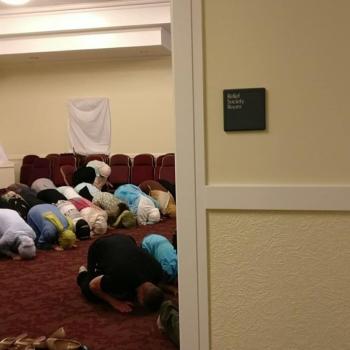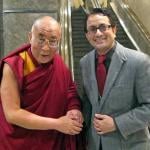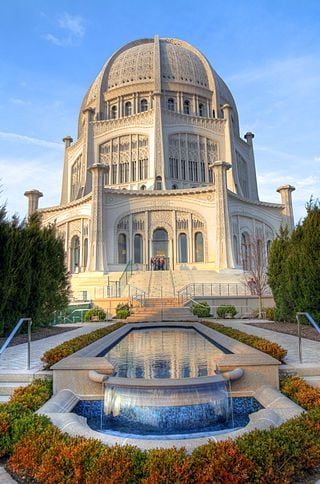
(Photo by Purpy Pupple, Wikimedia CC)
In the book on Islam that I’m intending to publish for a Latter-day Saint audience, I also plan to include a few words about the Druze and the Bahá’í Faith, both of which (historically speaking) represent offshoots of Islam. Here’s a first, hasty draft of the beginnings of the latter discussion:
The Bahá’í Faith, which was founded by Bahá’u’lláh in Persia (modern-day Iran) in 1863, emerged out of Shi‘ite Islam, but quickly diverged so far from mainstream Shi‘ism that it is no long considered a form of Islam but, rather, an independent monotheistic religion in its own right. (Accordingly, its adherents have been harshly persecuted as apostates under the theocratic rulers of the Islamic Republic of Iran.)
Its followers, who number somewhere between five million and seven million worldwide — they’re known as Bahá’ís — believe in the fundamental truth of all of the world’s religions, as well as in the unity and equality of the entire human race. The Buddha, Moses, Jesus, and Muhammad — as founders of major world religions — are all reverenced as “Manifestations of God.”
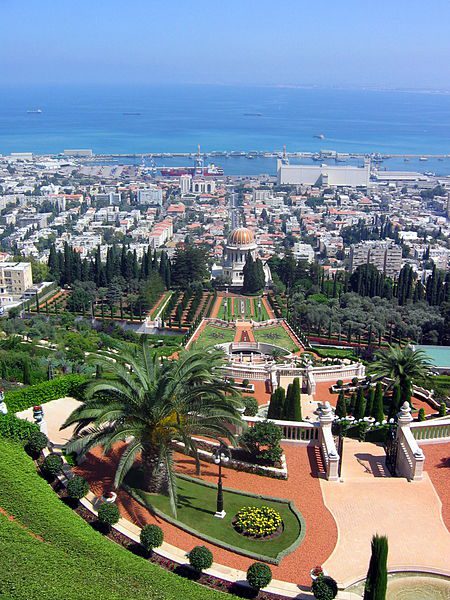
(Photograph by Danny Lyulyev, Wikimedia CC)
The headquarters of the Bahá’í Faith are located in Haifa, which is now — but, obviously, before 1948 was not — located within the borders of the State of Israel.
There is much to be admired in Bahá’ism, including its rejection of racism, extreme nationalism, and sexism, and its dream of a peaceful and unified world.
Shoghi Effendi, who led the Bahá’í community between 1921 and 1957, summarized the fundamental principles of Bahá’u’lláh’s teachings as follows:
The independent search after truth, unfettered by superstition or tradition; the oneness of the entire human race, the pivotal principle and fundamental doctrine of the Faith; the basic unity of all religions; the condemnation of all forms of prejudice, whether religious, racial, class or national; the harmony which must exist between religion and science; the equality of men and women, the two wings on which the bird of human kind is able to soar; the introduction of compulsory education; the adoption of a universal auxiliary language; the abolition of the extremes of wealth and poverty; the institution of a world tribunal for the adjudication of disputes between nations; the exaltation of work, performed in the spirit of service, to the rank of worship; the glorification of justice as the ruling principle in human society, and of religion as a bulwark for the protection of all peoples and nations; and the establishment of a permanent and universal peace as the supreme goal of all mankind—these stand out as the essential elements.
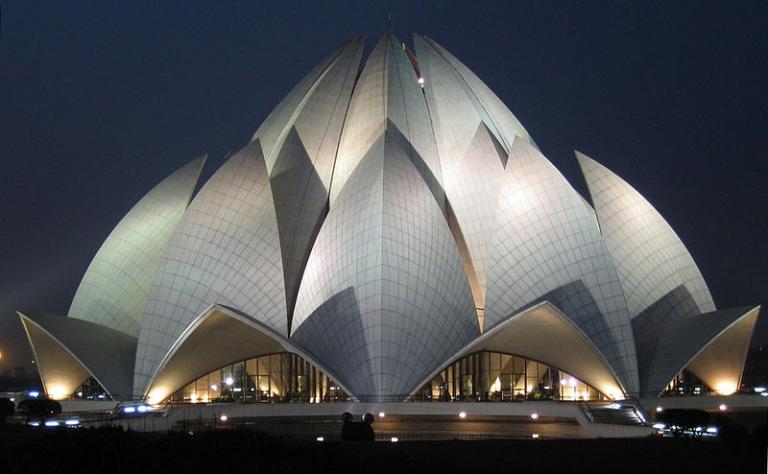
Buildings such as this one remind me why, when I was much younger, I dreamed of being an architect. The only thing that prevented me from going in that direction was a complete lack of talent. Maybe I should have proceeded anyway. After all, utter lack of talent hasn’t hindered several architects from achieving lucrative careers and winning major prizes.
One of the aspects of Bahá’ism that I personally most enjoy is its architecture. Some Bahá’í buildings are, to me at least, breathtakingly beautiful. Alas, though, the only Bahá’í temple or “house of worship” that I’ve personally visited is the one located in Wilmette, Illinois, immediately north of Evanston, which is immediately north of Chicago. It’s gorgeous. Someday I hope to see the Bahá’í “Lotus Temple” in Delhi, India.
Posted from Seaside, Oregon






